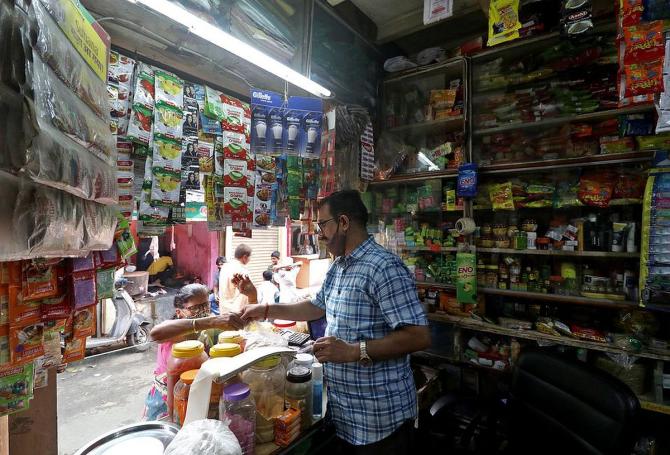Consumer goods firms and auto companies are witnessing an upturn in rural demand, which had been lagging for most of FY24.

Expectations of a bumper rabi crop harvest have helped turn the tide.
The Reserve Bank of India’s (RBI’s) Monetary Policy Committee kept the repo rate unchanged last week, noting that as rural demand catches up, consumption is expected to support economic growth in 2024-25.
“Rural demand, which was lagging urban demand earlier, picked up since Q2 2023-24.
"This is also suggested by the performance of indicators, such as two-wheeler sales (30.3 per cent Y-o-Y growth during January-February), MGNREGA demand (9.8 per cent Y-o-Y decline during February-March 2024), and retail tractor sales (16.1 per cent Y-o-Y increase in January-February),” stated an RBI release.
Retail sales for tractors were 892,313 units in FY24, up 7.5 per cent Y-o-Y, according to data released by the Federation of Automobile Dealers Associations (Fada) on Monday.
Wholesales, however, are estimated to have slipped by around 5 per cent Y-o-Y due to a slowdown in agricultural activities because of a delayed harvesting season and lower rabi sowing.
Mahindra & Mahindra, the market leader in tractors in India, said in mid-February that the year would end with around 900,000 units in overall sales compared to 945,000 units sold in 2022-23.
M&M enjoys a 41.8 per cent share of India’s tractor market, and ended the year with 364,526 units, down 6 per cent Y-o-Y.
Hemant Sikka, president, the farm equipment sector, M&M, said in April that “the government’s announcement of increased advance estimates of horticulture production and rabi wheat output vis-à-vis last year is expected to spread positive sentiment among farmers.”
He further said: “The forecast of a normal Southwest monsoon this year is expected to further boost tractor demand in the coming months.
"In the exports market, we have sold 1748 tractors, a growth of 26 per cent over the previous year.”
In February, he had said that volumes of 900,000 for the full year are “not very bad as such”, and that the outlook for FY25 is “not very muted”.
“As of now the forecast is for a normal monsoon, and if that happens, the FY25 outlook would not be very grim.
"We grew 26 per cent as an industry in the previous year, and on that high base, 900,000 units is not a bad number,” Sikka had told Business Standard.
Manish Raj Singhania, president, Fada, said that in FY24 rural demand picked up from the second half.
“Rural demand depends on government spending and monsoons.
"This year the El Niño impact has sobered down, so we expect 2024-25 to be good in terms of rural demand. If the monsoons are good and timely, the two-wheelers segment will outperform all others,” he said.
FADA data showed that two-wheeler retail sales ended 2023-24 with 9.3 per cent growth.
Vinod Aggarwal, president of the Society of Indian Automobile Manufacturers (Siam) in January said that the third quarter (October-December 2023) sales numbers were much better than the April-December figures.
“For example, in two-wheelers – which are largely impacted by swings in the rural economy – growth in the third quarter was 23 per cent Y-o-Y but the April-December period growth was 10 per cent year-on-year. Therefore, the figures indicate that the rural economy is doing better.”
“Rural sales (in FY24) were 787,000. Rural growth has been much better than urban growth, around 10 per cent for the year, whereas urban growth was at 7 per cent.
"This is also the highest ever rural sales we saw, which should also be a very good signal for the economy.
"Overall retail growth in the industry is about 8.7 per cent and that is estimated because the rural numbers are not officially shared on any forum.
"The industry estimate is about 33-35 per cent of sales are through rural,” said Shashank Srivastava, who became executive committee member of Maruti Suzuki India.
FMCG companies have also witnessed a pick-up in rural areas.
According to NielsenIQ data sourced from the industry, in January and February, urban demand grew at 1.5 per cent Y-o-Y, while rural grew at a faster clip -- at 2.5 per cent.
“We’ve started seeing some green shoots since February.
"We are expecting a good recovery in rural demand due to better rabi crops.
"The harvest season has begun and expectations of a good crop have already caused demand to witness a lift.
"Within our categories, we are seeing rural growth at 4 per cent since February compared to last year, while urban is growing at 2–2.5 per cent,” said Mayank Shah, senior category head at Parle Products.
In its quarterly preview, Indian FMCG major Dabur said it witnessed growth in the rural sector.
“Demand trends remained sluggish during the quarter.
"Rural growth picked up fuelled by price rollbacks in staples, which led to the gap between rural and urban narrowing.
"With a positive outlook for the rabi crop harvest and monsoon forecast to be normal, we expect consumption to pick up in the coming months,” the company said.
Manish Aggarwal, director, Bikano, Bikanervala Foods, on the other hand, said: “We witnessed a notable uptick in demand for both rural and urban areas in the fourth quarter (Q4FY24).
"However, while urban demand remained strong throughout, rural demand is still in the process of recovery.
"We are optimistic about its upward trajectory in the coming months.”
Speaking with Business Standard, B Thiagarajan, managing director, Blue Star said that the company has witnessed 20-25 per cent growth for air conditioners in Tier III, IV and V cities/towns over the past few years.
However, the gap between urban and rural continues to remain large due to lack of category penetration in rural areas.
“Demand in the FMCG sector for the fourth quarter is expected to have been muted. Growth in demand would be largely urban-driven, while rural would likely remain under some stress.
"Regional corporate players becoming stronger and farm incomes remaining low would continue to put pressure on bigger firms,” said Ravi Kapoor, partner and leader, retail and consumer, PwC India.
“Consumer confidence is on a sustained path to recovery. Going forward, subduing inflation and election spending should have a spill-over effect on the overall purchasing power of consumers. However, continued stress on the agriculture sector will remain a challenge for rural consumption.”
In its pre-quarterly update, Marico said that FMCG demand sentiment has stayed consistent vis-à-vis the preceding quarters with trends in urban and rural consumption largely converging. Meanwhile, Godrej Consumer Products in its update said that the operating conditions in India remain subdued.











